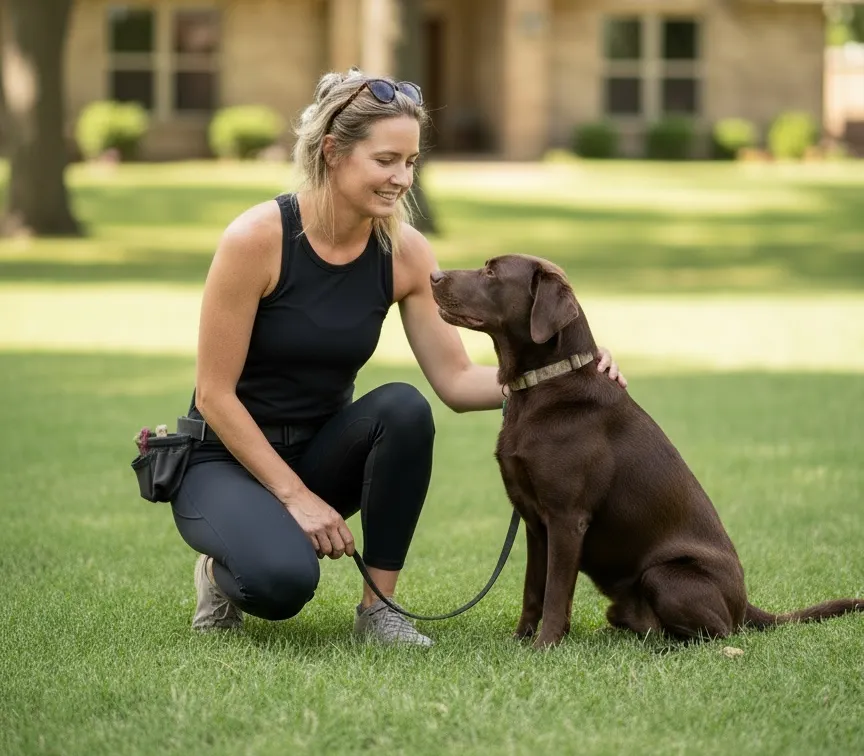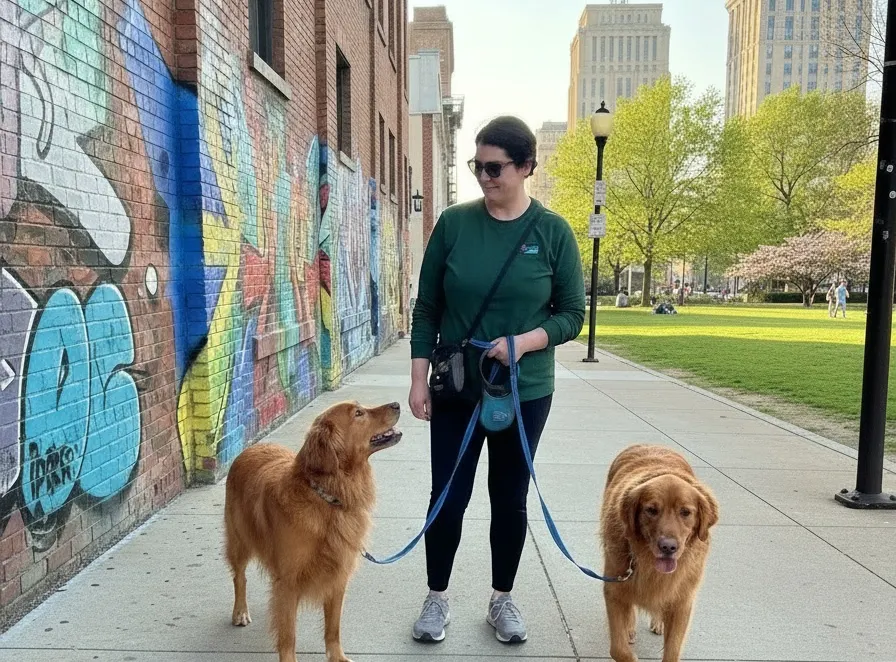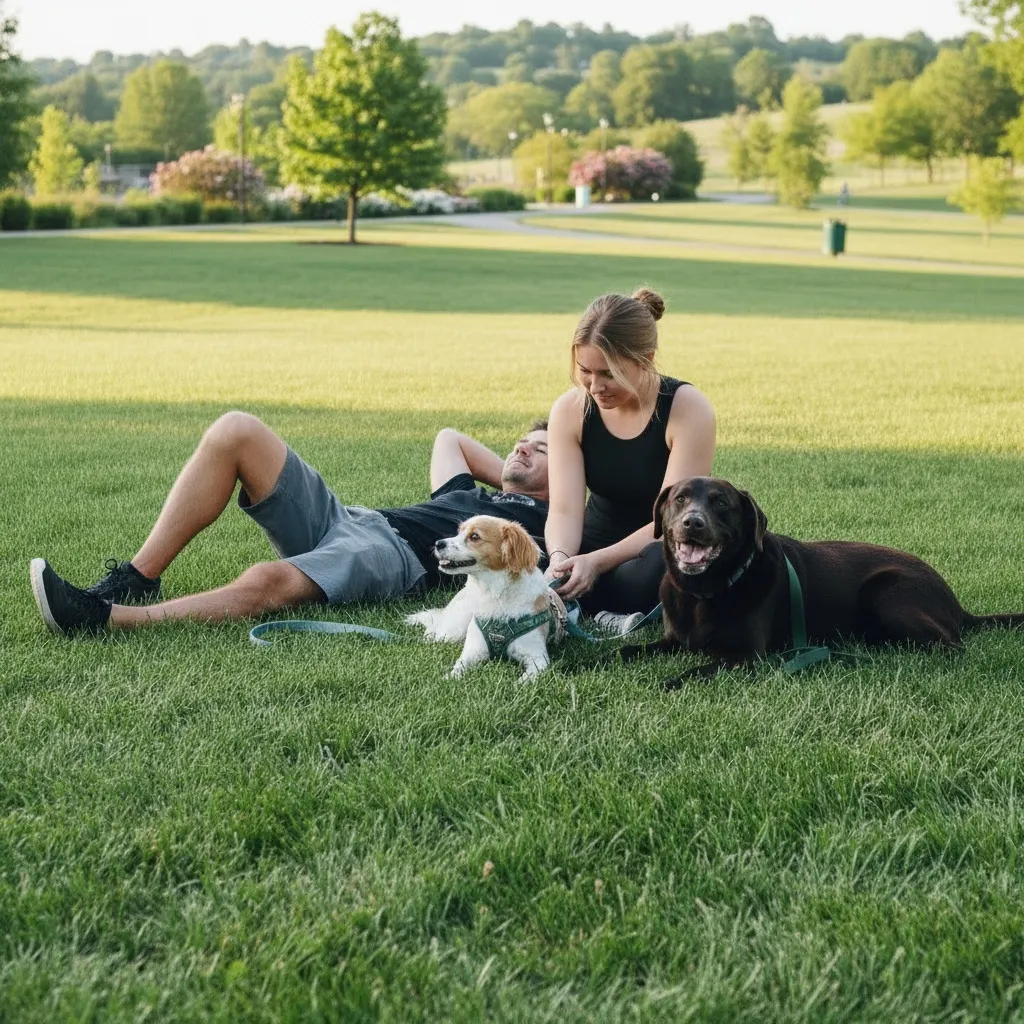Unleashing the Power of Positive Reinforcement for Your Dog
Have you ever considered how much the power of positive reinforcement could change your dog's behavior in your everyday life? Instead of constantly pointing out what your dog is doing wrong, this approach focuses on noticing and rewarding the moments when they get it right. Over time, that simple shift in focus can make your dog more eager to listen and more confident about making good choices. For many families in Kansas City and Northwest Arkansas, this style of training turns frustrating routines like walks, greetings, and quiet time at home into smoother and more enjoyable parts of the day. When you build your training around positive reinforcement, you are really building a stronger relationship with your dog, not just teaching a list of commands.

The Magic Behind Positive Reinforcement
Positive reinforcement is a science backed training method that rewards your dog for behaviors you want to see more often. When your dog offers a polite sit instead of jumping or chooses to check in with you instead of staring down a squirrel, you pair that behavior with something your dog loves. That reward might be food, play, a sniff break, or praise, as long as it truly feels rewarding to your dog. Over many small repetitions, your dog starts to understand that their choices help create their outcomes, and good choices make good things happen. This makes training feel clear, kind, and fun instead of confusing or stressful, which is especially important for sensitive or easily overwhelmed dogs.
At Newman's Dog Training, positive reinforcement is not just a nice idea. It is the foundation both of our head trainers learned while working with exotic animals at the Kansas City Zoo. Jena, who now leads training in Northwest Arkansas, and Kristin, who leads our Kansas City team, used these same reward based methods with leopards, sea lions, elephants, and gorillas. When you are working with animals who are powerful, sensitive, and cannot be physically forced, you quickly discover that clear communication and consistent rewards are essential. That experience now flows directly into the way we work with family dogs, turning proven zoo level training into simple, practical steps you can use at home.
Building Better Habits Through Positive Reinforcement
Good habits do not appear overnight, but they build quickly when you reward your dog for the choices you like. Starting with simple skills in a calm space can help your dog understand the game before you add real world distractions like kids, guests, or busy sidewalks. Once your dog knows the basics in your living room, you can slowly layer in more challenging environments, whether that is a quiet Kansas City neighborhood or a busy Northwest Arkansas trail. When everyone in your home uses the same cues and rewards, your dog gets a clear message instead of a confusing mix of rules. That consistency helps your dog feel more secure and makes it easier for them to repeat the same good habits wherever you go together.
- Start small: Begin with simple commands like sit, stay, or come in a quiet, low distraction area before you expect your dog to respond in busy places.
- Be consistent: Make sure everyone in the family uses the same words, gestures, and rewards so your dog does not have to guess what different people want.
- Time it right: Reward your dog as soon as they offer the behavior you like so they can clearly connect that moment with the good outcome that follows.

With these habits in place, you will usually notice that your dog tunes in faster and recovers more quickly when they get distracted. Over time, your dog will start to offer polite behaviors on their own, because those behaviors have a long history of earning something pleasant. This turns training from something that only happens in a formal session into a natural part of daily life. You will likely find that your dog looks to you for guidance more often and that communication feels smoother overall.
How Positive Reinforcement Strengthens Training
Positive reinforcement does far more than teach tricks or simple commands. It helps your dog feel safe working with you, which is a big deal when you are facing real world challenges like reactivity, excitement, or nervous behavior. When your dog believes that trying is worth it and that you respond with patience and rewards, they are more likely to keep engaging, even when the environment is busy or distracting. This is especially useful around popular spots in both Kansas City and Northwest Arkansas where there are bikes, kids, other dogs, and lots of smells. The more your dog experiences calm, rewarding interactions with you in these settings, the more they will learn to stay focused and relaxed in them.
Everyday Ways to Practice Positive Reinforcement
You do not need a long, formal training session to use positive reinforcement with your dog. Some of the most effective training happens in short, everyday moments that already exist in your routine. By asking for simple behaviors and rewarding them during meals, walks, and playtime, you help your dog understand that polite, calm choices matter all day long. This also keeps training from feeling like a chore and instead turns it into a natural part of living with your dog. When you approach it this way, you are less likely to skip practice, because you are simply weaving it into things you already do.
- During meal times: Ask your dog to sit, stay, or wait politely before you put the food bowl down, then reward that calm behavior with the meal itself.
- On walks: Reward your dog for checking in with you, walking on a loose leash, or stopping politely at intersections, whether you are strolling through Brookside or Waldo in Kansas City or along the Razorback Greenway in Northwest Arkansas.
- At playtime: Use games of fetch, tug, or hide and seek to reinforce cues like drop it, come, or leave it, so your dog builds skills while having fun.

By practicing in these everyday scenarios, your dog learns that good behavior pays off in real life, not just in a training class. This helps your dog stay more focused when something exciting happens, like a squirrel darting by or another dog appearing around a corner. Over time, those small choices add up to big improvements in manners, focus, and self control. You and your dog both benefit from a calmer, clearer way of working together.
Fun Facts About Positive Reinforcement
Positive reinforcement is used by professional trainers around the world because it works across many species and situations. At the Kansas City Zoo, Jena and Kristin used it with powerful and intelligent animals who needed to participate willingly in their own care, such as stepping onto scales, presenting paws or tails, or moving calmly between spaces. When you see a leopard, sea lion, elephant, or gorilla calmly offering behaviors because they have learned that cooperation earns rewards, it really highlights how effective this style of training can be. Bringing that same philosophy into homes in Kansas City and Northwest Arkansas means your family dog benefits from methods that have already been tested in some very demanding environments.
- Positive reinforcement is commonly used with dolphins, sea lions, horses, big cats, and even birds, not just with pet dogs.
- Dogs of any age, from young puppies to senior companions, can benefit from reward based training and learn new skills.
- Focusing on rewards instead of corrections can help lower anxiety and build confidence, especially in shy or sensitive dogs.
What Your Dog Wants You to Remember
Positive reinforcement is more than a training technique. It is a way of interacting with your dog that focuses on clear communication, kindness, and mutual trust. By rewarding the behaviors you want to see more often, you help your dog feel successful in your home, on the trail, and in new environments. When your dog understands that your guidance leads to good outcomes, they are more likely to stay engaged with you, even when distractions pop up. The result is a calmer home, easier walks, and a stronger, more enjoyable relationship with your dog. Small, consistent choices in how you respond to your dog can create big changes in how they behave and how you feel about living together.

At Newman's Dog Training in Kansas City and Northwest Arkansas, we love thinking outside the box and helping you turn everyday moments with your dog into fun, rewarding experiences. Jena's background as a zookeeper and positive reinforcement trainer at the Kansas City Zoo, along with Kristin's similar experience leading our Kansas City location, means your dog's training plan is built on methods that have been proven with both exotic animals and family pets. Our focus is on practical, positive reinforcement strategies that fit real life, not just a perfect training scenario. With the right plan and a reward based approach, training can feel less overwhelming and a lot more enjoyable for both of you.
We proudly offer dog training services in both Kansas City and Northwest Arkansas, including Bentonville, Fayetteville, and surrounding areas.
Ready to take the next step?
Book your free consultation today and let’s design the perfect plan for your dog.
Step up your dog training game with access to our entire course library and special
rates for one-on-one sessions. Unlock your potential now!
Save More, Learn More, Achieve More!
Please contact us if you have any questions on these tips, [email protected]
Also, follow us on Instagram and Facebook.

